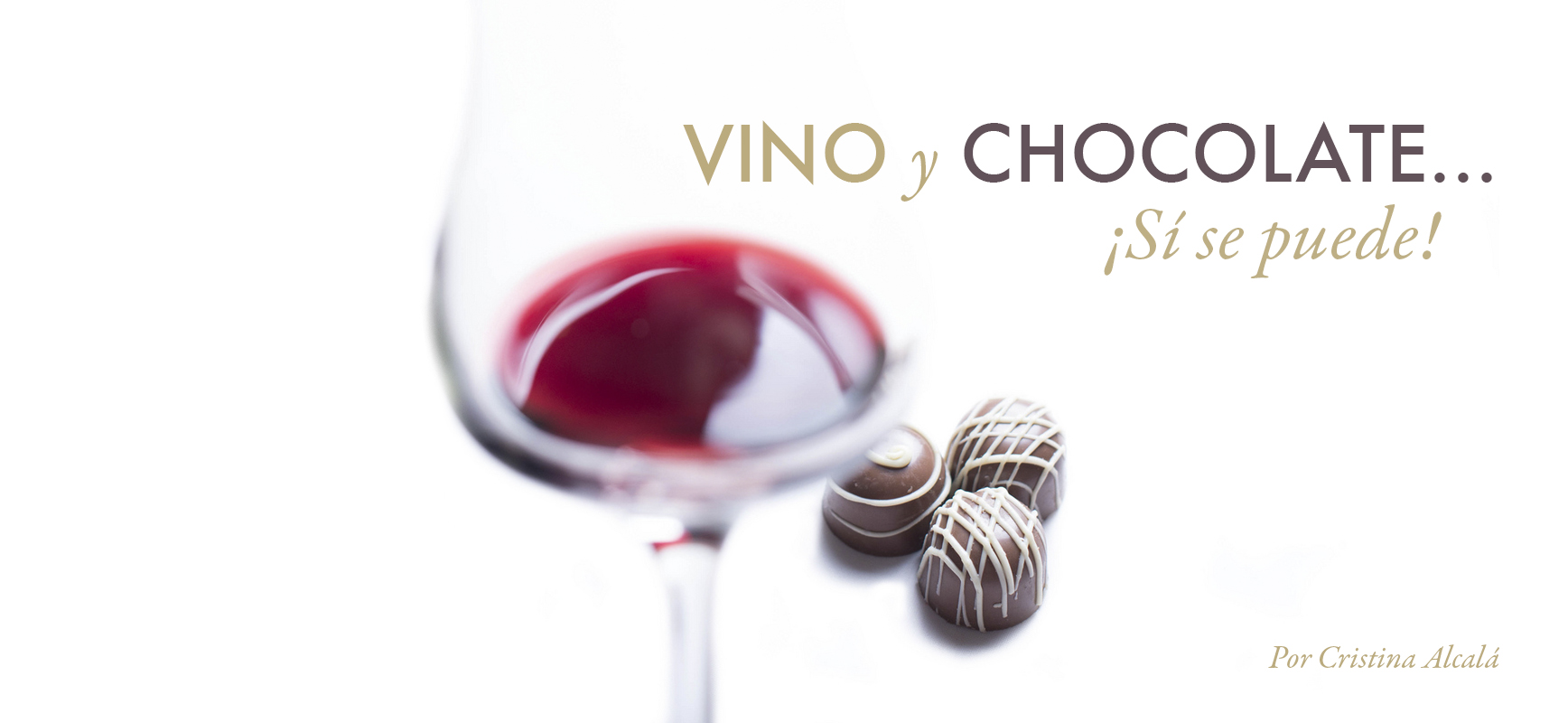Wine & Chocolate: an impossible pair?

Chocolate is the confectionary superstar thanks to its versatility, textures and combinations. The world of wine is equally diverse. Even so, we often read or hear about how these two items do not go together well. I don't believe this to be true. Wine and chocolate are two essential gastronomic products that have more in common than one can imagine. What does chocolate taste like? How does it smell? What kind of textures does it have? Are all kinds of chocolate equally sweet?
A few years ago, I was assigned a project that involved analyzing wines and chocolates. 100 different combinations. Many of them were surprising, not only in how certain types of wine reacted, but also in the combination of particular chocolates.
In the end, it all comes down to choosing the right kinds of chocolate and wine!
A look at chocolate
Chocolate is made by combining sugar with two components derived from the processing of cocoa beans: cocoa paste—the solid component—and cocoa butter—the fatty component.
The proportion of these components and whether they are combined with other products—milk, dried fruit or nuts, fruit, etc.—determines the type of chocolate. Basically, these are as follows:
1. Dark chocolate: no other products are added, it must contain at least 43% cocoa; the more cocoa, the more bitter the flavor and the lower the percentage of sugar and fat.
2. Milk chocolate: milk is added, either in powdered or condensed form, to the basic ingredients in varying proportions.
3. White chocolate: made from cocoa butter, sugar and milk solids. Despite not containing any cocoa paste, it is referred to as chocolate even though technically it isn't.
4. Chocolate with dried fruit, nuts or grains: dark or milk chocolate with hazelnuts, almonds, walnuts, pine nuts or toasted, whole or chunky bits of grain in quantities ranging from 8% to 40%.
5. Chocolate with fruit: dark or milk chocolate with fruit—either whole, sliced, dried or candied—in quantities ranging from 5% to 40%.
An unlikely, but not impossible match
Here are a few general rules to exploring this unlikely, but not impossible match. Medium-bodied red wines offer flavors of red fruit and spices; dense red wines with quite a bit of oak aging display notes of tobacco, vanilla or coffee; white wines bring white fruit and citrus notes to the table; dessert wines, both red and white, stand out for their special, creamy liqueur-like sensations. And don't rule out sparkling wines: they combine beautifully with certain chocolates.
Generally speaking, pair lighter chocolates with lighter wines and chocolates with a higher percentage of cocoa with more full-bodied wines. Extreme combinations can be exquisitely explosive and unforgettable. Chocolates with a lot of cocoa, such as bittersweet or semi-sweet styles, combine well with varieties like Syrah, Pinot Noir, a brandy or port.
If we want to make a chocolate-based dessert and then decide on a wine to pair with it, my recommendations would be as follows: Desserts made with coffee or toffee-flavored chocolate pair excellently with oloroso sherries or Pedro Ximénez wines. Desserts involving chocolate with fruit—orange or apricot—and sweet white wines like Muscat make a great match. A simple dessert made solely with dark chocolate and paired with the elegance of port is close to perfect. The bittersweet notes of the chocolate blend with the liqueur-like fruit of the wine, enhancing both their similarities and contrasts.
A few suggestions
When it comes to buying chocolate, we have a lot of options. In addition to myriad versions of dark and milk chocolate, it is increasingly common to find chocolates filled with...and here the descriptions and elements take on astounding diversity. Certain pairings with these types of chocolate can be interesting.
1. Brut Nature Reserva cava and milk chocolate truffle filled with caramel.
They pair well thanks to a contrasting yet balanced palate: the sweet, intense sensation of the chocolate alongside the wonderfully aged style of this cava.
2. White Gewürztraminer and white chocolate.
In combining creamy white chocolate with this aromatic variety both gain in volume and nuance on the palate.
3. A Ribera del Duero Tempranillo and dark chocolate with sea salt.
The hint of salt in the chocolate gives this potent, long and flavorful wine a slightly fresh bite that is truly surprising.
4. A La Rioja Tempranillo and milk chocolate filled with hazelnut mousse.
Milk chocolate with a creamy, smooth filling that enhances the aromas and flavor of the wine's character, giving it greater length and depth on the palate.
5. Sweet oloroso sherry and dark chocolate with orange pieces.
The characteristic flavor of dark chocolate filled with candied orange pieces combines beautifully with this type of wine. A remarkable pairing.
These are only a few suggestions. I encourage you to experiment with your favorite wines and chocolates to find the pairings that you find most delightful.
